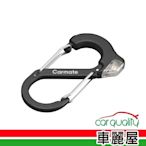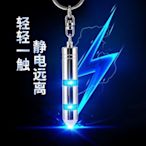靜電消除器 相關
廣告除靜電風扇,靜電消除器XC-500/XC-510,除靜電棒,除靜電網. Trinc無風/空間除靜電系統
- 靜電消除風扇
智慧聯網離子風扇
迷你型警報離子風扇
- 靜電防護區之防靜電ESD耗材
防靜電桌墊,導電/防靜電手套
不銹鋼工作桌,導電/防靜電椅
- 人體行走靜電量測儀器
靜電量測儀/表面阻抗Trek/Monroe
離子風扇分析儀/設備接地在線監控系統
- 智慧聯網靜電消散設備
Accurax靜電棒/靜電網/離子風扇
Trinc空間除靜電
- 靜電消除風扇
強力除去空間中靜電,抑制灰塵沾附,生產品質大提升!織品/塑料/科技廠等皆適用,馬上洽詢! 優良構造設計不易故障,提高良率減低成本,品質卓越,值得信賴。
專營抗靜電氣泡袋,抗靜電EPE袋,客製化服務,滿足您每個需求,值得您信賴! ...
專營靜電中和消除風扇、離子消除槍、離子排等產品,通過多項品質認證,值得信賴! 離子消除槍、離子排等產品,通過多項品質認證,值得信賴!
過去一個月已有 超過 1 萬 位使用者造訪過 taiwan.exair.com
生產線過程的靜電消除。 防止卡紙、撕裂和震動。 提供集中的電離空氣流。 防止堵塞和震動。
搜尋結果
 $481【CARMATE】靜電消除器 DZ580 登山扣環靜電消除器 CARMATE(車麗屋)購物中心
$481【CARMATE】靜電消除器 DZ580 登山扣環靜電消除器 CARMATE(車麗屋)購物中心 $7000雜項~ Furutech deStat 靜電消除器 品項新 有效音響撿便宜
$7000雜項~ Furutech deStat 靜電消除器 品項新 有效音響撿便宜 $290樂樂小舖-日本 CARMATE碳纖調靜電消除器-墨 車身車門 碳纖紋鍍鉻除靜電鑰匙圈【NZ985】樂樂小舖-滿990免運
$290樂樂小舖-日本 CARMATE碳纖調靜電消除器-墨 車身車門 碳纖紋鍍鉻除靜電鑰匙圈【NZ985】樂樂小舖-滿990免運 $225毛毛家 ~ 日本 CARMATE NZ972 藍 NZ973 粉 NZ974 銀 靜電消除器 靜電消除棒 消除靜電鑰匙圈毛毛家 ^^ 汽車精品百貨
$225毛毛家 ~ 日本 CARMATE NZ972 藍 NZ973 粉 NZ974 銀 靜電消除器 靜電消除棒 消除靜電鑰匙圈毛毛家 ^^ 汽車精品百貨![汽車靜電帶 EARTH BELT 金屬橡膠接地鏈 34.5-39.5CM 去靜電消除器 裝飾用品-C925 汽車靜電帶 EARTH BELT 金屬橡膠接地鏈 34.5-39.5CM 去靜電消除器 裝飾用品-C925]() $222汽車靜電帶 EARTH BELT 金屬橡膠接地鏈 34.5-39.5CM 去靜電消除器 裝飾用品-C925百源利百貨優選
$222汽車靜電帶 EARTH BELT 金屬橡膠接地鏈 34.5-39.5CM 去靜電消除器 裝飾用品-C925百源利百貨優選![汽車除靜電消除器 去消人體靜電釋放器 神器棒鑰匙扣用品防靜電車用94 汽車除靜電消除器 去消人體靜電釋放器 神器棒鑰匙扣用品防靜電車用94]() $117汽車除靜電消除器 去消人體靜電釋放器 神器棒鑰匙扣用品防靜電車用94壹號人家
$117汽車除靜電消除器 去消人體靜電釋放器 神器棒鑰匙扣用品防靜電車用94壹號人家![满两百发货!!有線防靜電手環手腕帶靜電防護可伸縮PU手環耐拉伸靜電消除器有繩 满两百发货!!有線防靜電手環手腕帶靜電防護可伸縮PU手環耐拉伸靜電消除器有繩]() $258满两百发货!!有線防靜電手環手腕帶靜電防護可伸縮PU手環耐拉伸靜電消除器有繩五金商店 ❥ 營業中
$258满两百发货!!有線防靜電手環手腕帶靜電防護可伸縮PU手環耐拉伸靜電消除器有繩五金商店 ❥ 營業中![正品涂布機除靜電消除器ST-503A離子風棒 紙張薄膜印刷機除靜電棒. 正品涂布機除靜電消除器ST-503A離子風棒 紙張薄膜印刷機除靜電棒.]() $1610正品涂布機除靜電消除器ST-503A離子風棒 紙張薄膜印刷機除靜電棒.騰輝創意工坊
$1610正品涂布機除靜電消除器ST-503A離子風棒 紙張薄膜印刷機除靜電棒.騰輝創意工坊![正品ZIDON智東ZSL-001離子風機帶暖風防靜電等離子風扇靜電消除器. 正品ZIDON智東ZSL-001離子風機帶暖風防靜電等離子風扇靜電消除器.]() $2431正品ZIDON智東ZSL-001離子風機帶暖風防靜電等離子風扇靜電消除器.騰輝創意工坊
$2431正品ZIDON智東ZSL-001離子風機帶暖風防靜電等離子風扇靜電消除器.騰輝創意工坊![離子風機防靜電工業靜電消除器JH-TBL除靜電懸掛式台式離子風扇. 離子風機防靜電工業靜電消除器JH-TBL除靜電懸掛式台式離子風扇.]() $1456離子風機防靜電工業靜電消除器JH-TBL除靜電懸掛式台式離子風扇.騰輝創意工坊
$1456離子風機防靜電工業靜電消除器JH-TBL除靜電懸掛式台式離子風扇.騰輝創意工坊![【熱賣精選】 汽車去除靜電消除器接地條釋放神器專用懸掛式拖地線車用防靜電帶 汽車用品 【熱賣精選】 汽車去除靜電消除器接地條釋放神器專用懸掛式拖地線車用防靜電帶 汽車用品]() $700【熱賣精選】 汽車去除靜電消除器接地條釋放神器專用懸掛式拖地線車用防靜電帶 汽車用品Y3250077627
$700【熱賣精選】 汽車去除靜電消除器接地條釋放神器專用懸掛式拖地線車用防靜電帶 汽車用品Y3250077627![汽車除靜電消除器 去消人體靜電釋放器 神器棒鑰匙扣用品防靜電車用94 U9RQ-欣鑫百貨 汽車除靜電消除器 去消人體靜電釋放器 神器棒鑰匙扣用品防靜電車用94 U9RQ-欣鑫百貨]() $2168汽車除靜電消除器 去消人體靜電釋放器 神器棒鑰匙扣用品防靜電車用94 U9RQ-欣鑫百貨欣晴百貨
$2168汽車除靜電消除器 去消人體靜電釋放器 神器棒鑰匙扣用品防靜電車用94 U9RQ-欣鑫百貨欣晴百貨
An electrostatic separator is a device for separating particles by mass in a low energy charged beam. An example is the electrostatic precipitator used in coal-fired power plants to treat exhaust gas, removing small particles that cause air pollution.
DisplayPort connector. A DisplayPort port (top right) near an Ethernet port and a USB port. DisplayPort ( DP) is a proprietary [a] digital display interface developed by a consortium of PC and chip manufacturers and standardized by the Video Electronics Standards Association (VESA). It is primarily used to connect a video source to a display ...
- May 2006; 17 years ago
- Digital audio/video connector
- Various
- VESA
The Antikythera mechanism ( / ˌæntɪˈkɪθɪərə / AN-tih-KIH-ther-ə) is an Ancient Greek hand-powered orrery (model of the Solar System), described as the oldest known example of an analogue computer [1] [2] [3] used to predict astronomical positions and eclipses decades in advance.
- History
- Subfields
- Related Disciplines
- Education
- Professional Practice
- Tools and Work
- See Also
- Further Reading
- External Links
Electricity has been a subject of scientific interest since at least the early 17th century. William Gilbert was a prominent early electrical scientist, and was the first to draw a clear distinction between magnetism and static electricity. He is credited with establishing the term "electricity". He also designed the versorium: a device that detect...
One of the properties of electricity is that it is very useful for energy transmission as well as for information transmission. These were also the first areas in which electrical engineering was developed. Today, electrical engineering has many subdisciplines, the most common of which are listed below. Although there are electrical engineers who f...
Mechatronics is an engineering discipline which deals with the convergence of electrical and mechanical systems. Such combined systems are known as electromechanical systems and have widespread adoption. Examples include automated manufacturing systems, heating, ventilation and air-conditioning systems, and various subsystems of aircraft and automo...
Electrical engineers typically possess an academic degree with a major in electrical engineering, electronics engineering, electrical engineering technology, or electrical and electronic engineering. The same fundamental principles are taught in all programs, though emphasis may vary according to title. The length of study for such a degree is usua...
In most countries, a bachelor's degree in engineering represents the first step towards professional certification and the degree program itself is certified by a professional body. After completing a certified degree program the engineer must satisfy a range of requirements (including work experience requirements) before being certified. Once cert...
From the Global Positioning System to electric power generation, electrical engineers have contributed to the development of a wide range of technologies. They design, develop, test, and supervise the deployment of electrical systems and electronic devices. For example, they may work on the design of telecommunication systems, the operation of elec...
Adhami, Reza; Meenen, Peter M.; Hite, Denis (2007). Fundamental Concepts in Electrical and Computer Engineering with Practical Design Problems. Universal-Publishers. ISBN 978-1-58112-971-7.Bober, William; Stevens, Andrew (27 August 2012). Numerical and Analytical Methods with MATLAB for Electrical Engineers. CRC Press. ISBN 978-1-4398-5429-7.Bobrow, Leonard S. (1996). Fundamentals of Electrical Engineering. Oxford University Press. ISBN 978-0-19-510509-4.Chen, Wai Kai (16 November 2004). The Electrical Engineering Handbook. Academic Press. ISBN 978-0-08-047748-0.MIT OpenCourseWare Archived 26 January 2008 at the Wayback Machinein-depth look at Electrical Engineering – online courses with video lectures.Semiconductor. Industry. Nanoelectronics. v. t. e. A semiconductor is a material that has an electrical conductivity value falling between that of a conductor, such as copper, and an insulator, such as glass. Its resistivity generally falls as its temperature rises; metals behave in the opposite way. [1]
Transformer. An O-core transformer consisting of two coils of copper wire wrapped around a magnetic core. In electrical engineering, a transformer is a passive component that transfers electrical energy from one electrical circuit to another circuit, or multiple circuits. A varying current in any coil of the transformer produces a varying ...
A small current at the base terminal, flowing between the base and the emitter, can control or switch a much larger current between the collector and emitter. A field-effect transistor (FET) has terminals labeled gate, source and drain. A voltage at the gate can control a current between source and drain.












